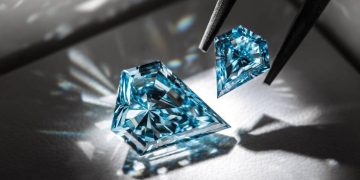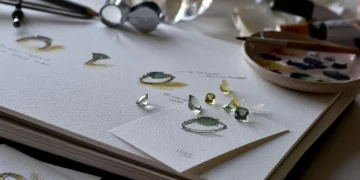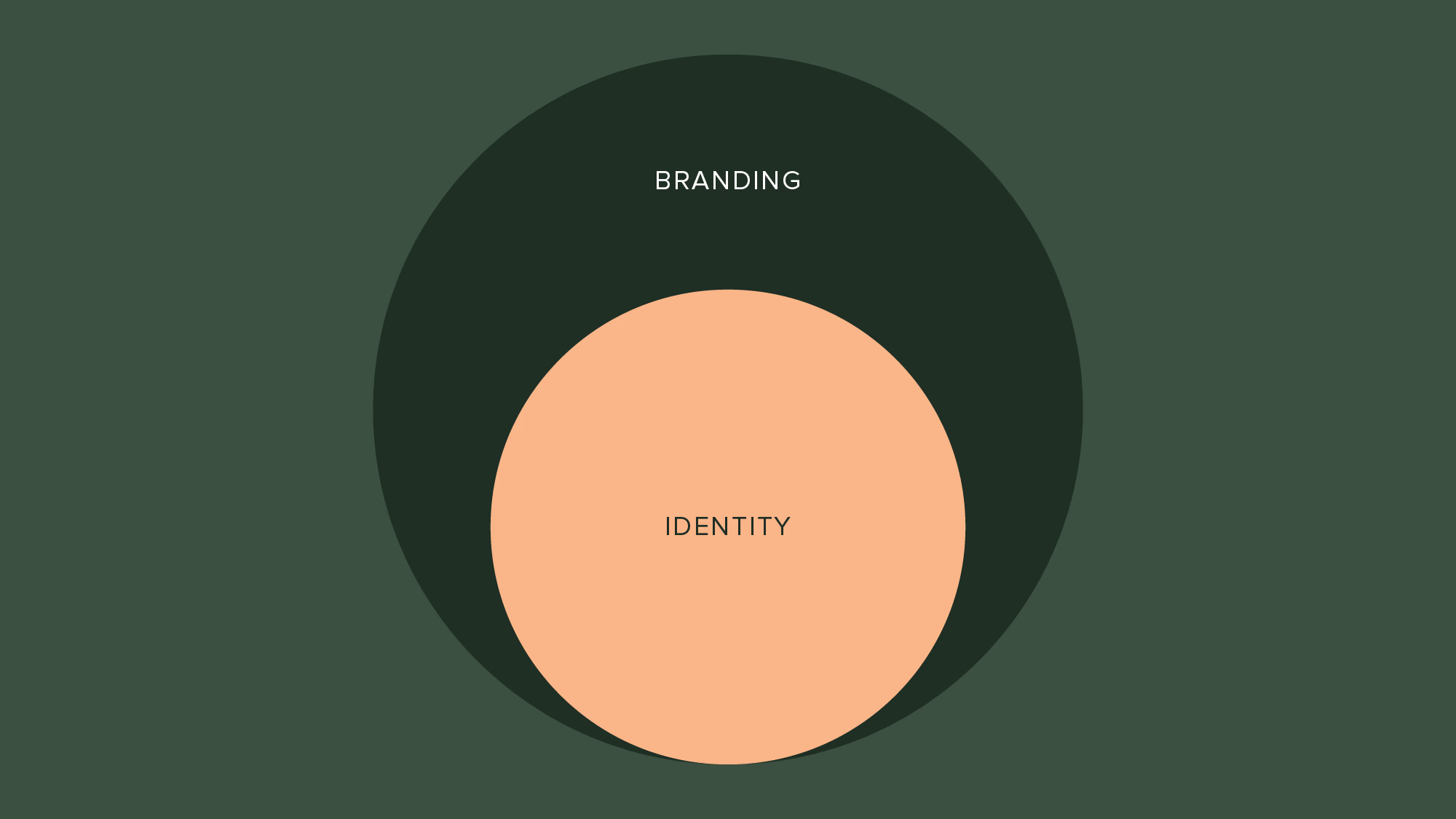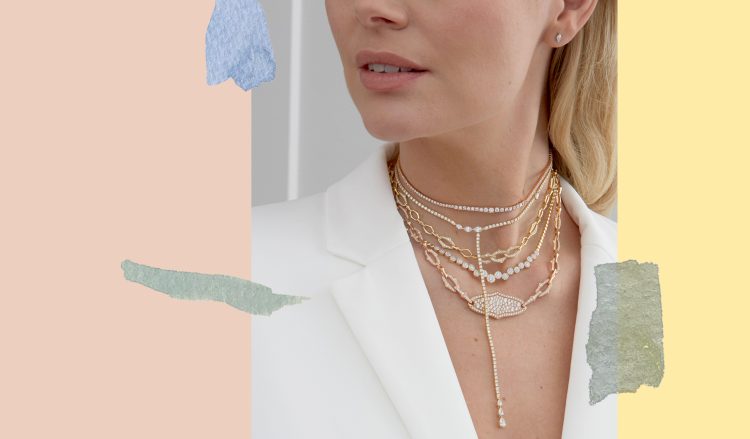The luxury jewelry market is known for its glamour, exclusivity, and enduring value. From high-end diamond necklaces to limited-edition watches, luxury jewelry brands have long been a symbol of status and wealth. However, the market for luxury goods is not immune to the broader economic conditions that influence consumer behavior. Economic fluctuations, including recessions, inflation, or unexpected global events like the COVID-19 pandemic, can affect consumer spending patterns and impact the stability of the jewelry sector.
Given the historical resilience of luxury goods during economic downturns, one might wonder how luxury jewelry brands will adapt to economic fluctuations. Will they continue to thrive in times of uncertainty, or will they be forced to reconsider their strategies? This article explores how luxury jewelry brands are likely to respond to economic volatility, the challenges they face, and the opportunities that arise during periods of economic turbulence.
1. The Resilience of Luxury Jewelry in Economic Downturns
A. The Historical Stability of Luxury Goods
Despite economic fluctuations, the luxury goods market has historically demonstrated resilience. High-net-worth individuals (HNWIs) and ultra-high-net-worth individuals (UHNWIs) often continue to make luxury purchases, even during recessions. This is due to the fact that luxury jewelry is seen as both a symbol of status and a store of value. For many affluent buyers, luxury goods like diamonds, gold, and high-end watches are viewed as tangible investments that can retain or appreciate in value over time.
During times of economic uncertainty, luxury jewelry is sometimes seen as a safe haven investment, much like precious metals or real estate. Jewelry and gemstones, particularly those with rare and unique qualities, have long been considered inflation-proof assets. For example, diamonds are often viewed as a stable store of value, with their price less prone to fluctuations compared to other consumer goods. In the same vein, high-quality gold and platinum jewelry pieces are sought after by those looking to hedge against inflation and economic instability.
B. Growing Demand from Emerging Markets
Emerging markets, particularly in regions like Asia, the Middle East, and Latin America, continue to show strong demand for luxury jewelry, even in times of global economic instability. As the wealth of these regions continues to rise, especially among the younger, affluent demographic, luxury jewelry brands can rely on expanding markets to counterbalance downturns in traditional markets like North America or Europe.
Additionally, in countries like China and India, luxury jewelry is often seen as a symbol of wealth and a cultural signifier, which can fuel demand even during challenging times. Luxury brands are increasingly focusing on these regions, tailoring their products and marketing strategies to appeal to the tastes and preferences of consumers in these growing markets.
2. Adapting to Changing Consumer Behavior
A. Shifting Focus to Exclusivity and Personalization
During economic downturns, many consumers become more cautious with their discretionary spending. However, they may still be willing to invest in products that feel unique, personalized, or exclusive. This is where luxury jewelry brands have an advantage—they can focus on offering bespoke designs or limited-edition collections that cater to customers looking for something truly one-of-a-kind. Such items not only satisfy consumers’ desire for exclusivity but also tend to hold or increase in value.
Brands like Cartier, Van Cleef & Arpels, and Tiffany & Co. have capitalized on this by offering bespoke services, allowing clients to customize their jewelry. Personalization helps maintain the appeal of luxury jewelry in uncertain times, as customers are drawn to items that reflect their individuality or personal milestones, such as anniversaries, weddings, or family heirlooms.
Moreover, luxury jewelry brands are also moving toward digital customization tools, where consumers can design their own jewelry online with the help of advanced technology. This offers a more affordable and accessible way for consumers to get involved in the design process, helping brands cater to the growing demand for personalized luxury, even during economic slowdowns.
B. Focusing on Timeless Value Over Trend-Driven Pieces
Another strategy luxury jewelry brands may adopt in response to economic fluctuations is to emphasize timeless, classic designs rather than trendy or overly seasonal pieces. Consumers may be less inclined to purchase flashy or trendy items during uncertain times, preferring instead to invest in jewelry that will retain its value and appeal long-term. Classic designs such as simple diamond rings, pearl necklaces, or gold bracelets are less affected by market trends and tend to remain valuable over time.
In fact, many luxury jewelry brands have made a concerted effort to create collections with timeless appeal—pieces that are more about enduring quality and craftsmanship rather than being overly influenced by the latest fashion trends. Such collections appeal to the practical mindset of buyers who are looking for investments rather than transient luxuries.
3. Leveraging Technology and Innovation
A. E-Commerce and Digital Engagement
One of the most profound shifts in the luxury jewelry industry over the last decade has been the rise of e-commerce. In response to economic fluctuations, luxury jewelry brands have increasingly adopted online platforms to reach a broader audience. This digital shift has proven to be especially vital during global crises, such as the COVID-19 pandemic, which forced many stores to close temporarily and limited in-person shopping.
Luxury jewelry brands are now investing heavily in digital experiences that simulate in-store shopping online. Virtual try-on tools, augmented reality (AR), and AI-driven personalization are becoming commonplace, allowing consumers to visualize how a piece of jewelry will look on them before making a purchase. Brands that prioritize these digital tools will likely be better equipped to weather economic downturns, as they can maintain sales and customer engagement even when foot traffic to physical stores declines.
B. Blockchain for Transparency and Authenticity
Another area where technology will play a significant role is in improving transparency and authentication of luxury jewelry. As consumers become more concerned with the provenance and sustainability of the products they buy, luxury brands are leveraging blockchain technology to provide verifiable records of a piece’s history—from the source of the materials used to its journey through the supply chain.
Blockchain not only ensures that consumers are purchasing ethical and conflict-free items, but it also provides a way for brands to offer lifetime guarantees of authenticity. With this technology, consumers can feel confident that their high-value purchase is genuine, further enhancing the long-term value of their jewelry.
4. Sustainability as a Key Response to Economic Pressures
A. Investing in Sustainable Practices
Sustainability has become an essential factor in shaping the future of luxury jewelry. More than ever, consumers are demanding transparency about the environmental and ethical impact of the products they purchase. Luxury jewelry brands that can adapt to these demands by adopting sustainable practices—such as sourcing ethically mined materials, using recycled metals, and offering lab-grown diamonds—are likely to gain a competitive edge.
Sustainable luxury is not just a passing trend but is increasingly becoming a necessity, even in times of economic uncertainty. Consumers are not only looking for high-quality and beautiful pieces but also for brands that align with their values. By offering sustainably produced jewelry, brands can attract conscientious consumers who are willing to invest in products that contribute to a better world.
B. Engaging in Corporate Social Responsibility (CSR)
In addition to offering sustainable products, luxury jewelry brands are increasingly incorporating Corporate Social Responsibility (CSR) into their business models. During economic downturns, CSR initiatives can help brands maintain consumer loyalty and bolster their reputation. Brands that give back to the community, support local artisans, or invest in environmental conservation are seen as more responsible and trustworthy, which can help them weather economic challenges.

5. The Role of High-Quality Customer Service and Exclusivity
A. Enhancing Customer Loyalty
As economic conditions fluctuate, the importance of customer loyalty becomes even more critical for luxury jewelry brands. One of the ways to maintain this loyalty is through exceptional customer service, which includes personalized shopping experiences, bespoke services, and exclusive offerings.
Luxury jewelry brands that focus on providing an elevated, personalized shopping experience—whether online or in-store—will likely retain their high-net-worth clientele. The ability to create long-lasting relationships with customers through tailored services and exclusive events can help brands ride out the highs and lows of economic cycles.
B. Exclusivity as a Selling Point
The concept of exclusivity is particularly important in the luxury jewelry market. During times of economic uncertainty, many affluent consumers may be more selective about their purchases, preferring pieces that feel rare and special. Luxury brands can capitalize on this desire by offering limited-edition collections or creating products that are available only to a select group of customers.
Conclusion: Adapting to Economic Shifts
Luxury jewelry brands have historically weathered economic fluctuations by adapting to consumer demands and focusing on the intrinsic value of their products. During periods of economic uncertainty, these brands will continue to rely on exclusivity, personalization, and timelessness to maintain their appeal. Moreover, embracing technology, focusing on sustainability, and providing exceptional customer service will be key strategies to help these brands navigate the challenges posed by global economic shifts.
While the economic landscape will undoubtedly change over time, luxury jewelry brands that remain flexible, transparent, and in tune with the evolving needs of their customers will continue to thrive—regardless of the market’s ups and downs.
















































